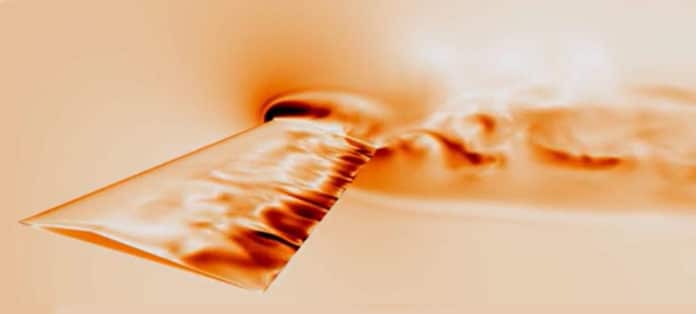NASA’s Ingenuity Mars Helicopter was a significant milestone: the very first powered, controlled flight in the extremely thin atmosphere of Mars and, in fact, the first such flight in any world beyond Earth. Following its great success, engineers seek ways to create even better-optimized helicopters.
Designing helicopters that can generate enough lift to take off in “air” that is less dense with higher wind speeds is quite challenging. Thanks to a ‘virtual wind tunnel’ simulator created by scientists at Imperial College London, scientists could design rotor blades for the next generation of Martian helicopters.
What does this simulator do?
The simulator creates Mars’ atmospheric conditions to test helicopter blade designs. Through this, scientists can test their design in Mars-like atmospheric conditions.
Scientists compared their results with the real-life Mars Wind Tunnel in Tohoku University, Japan. They found that their simulations recreated true Martian conditions with much higher accuracy than possible.
Lidia Carós Roca, a Ph.D. student from the Department of Aeronautics who was the lead author of the group’s research paper, said: “The Martian atmosphere has a very low density – the air is as thin as the Earth’s atmosphere at very high altitudes.”
“Conventional blades have benefited from over 100 years of aeronautical design experience. However, the low density and low speed of sound on Mars present a flight regime unlike anything encountered on Earth, making such blades inefficient for Martian flight. Our simulator will help design fundamentally new blades that will perform efficiently on Mars.”
Scientist used their in-house high-fidelity solver, called PyFR, to directly simulate the governing equations of motion on Mars. PyFR is a framework for solving advection-diffusion type problems on streaming architectures using the Flux Reconstruction approach of Huynh.
They then ran the simulations on some of the world’s largest supercomputers, including EPCC’s Cirrus in Edinburgh and Piz Daint at the Swiss National Supercomputing Centre.
Study co-author Dr. Oliver Buxton of the Department of Aeronautics said: “While wind tunnel experiments are usually considered the gold standard, they are not without their issues. For example, blades must be mounted near the tunnel walls. These walls do not exist for a real helicopter blade, yet they can fundamentally affect the nature of the flow over the blade in a wind tunnel and affect our understanding of its performance.”
By optimally increasing the realism of their simulations, scientists had shown that only when the full span of the blade plus the wind tunnel walls were fully simulated did the results come close to the Tohoku experiments. What’s more, the simulations also predicted a significant change in the behavior of the blade with angle-of-attack.
At a particular incidence, the lift mechanism of the blade changes suddenly with the formation of a giant vortex that acts to suck on the top surface of the blade, thereby increasing its lift.
Study co-author Professor Peter Vincent, also from the Department of Aeronautics, said: “Our simulations have proven to be extremely accurate in predicting the lift and drag of these Martian helicopter blades. The fact that we can even predict these big and sudden changes in lift performance give us great confidence that the tools we have developed will enable us to design more efficient Martian helicopter blades.”
Scientists noted, “This new knowledge could help engineers increase aerofoils’ performance on both Earth and Mars.”
Scientists are further planning to use the simulator to test specific aerofoil shapes.
Journal Reference:
- Lidia Carlos, Oliver Buxton. Direct Numerical Simulation of Flow over a Triangular Airfoil Under Martian Conditions. DOI: 10.2514/1.J061454
